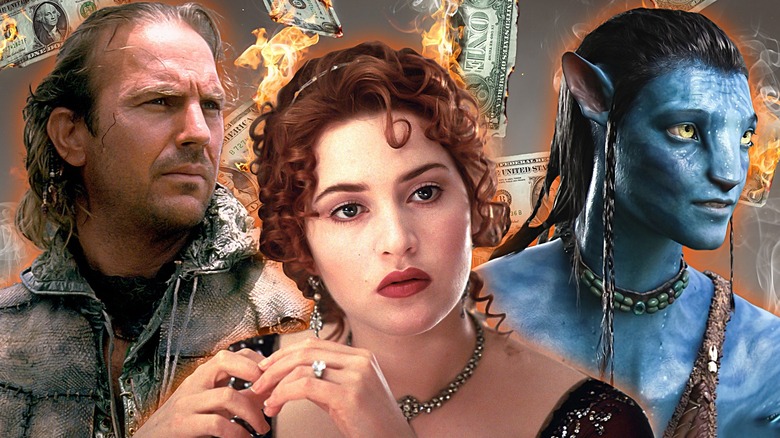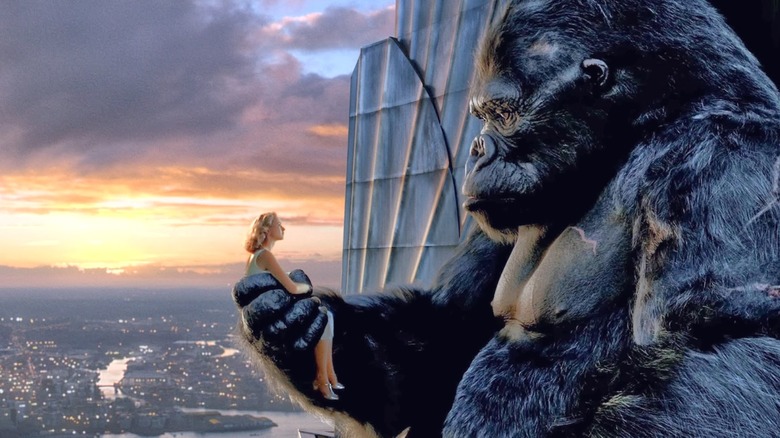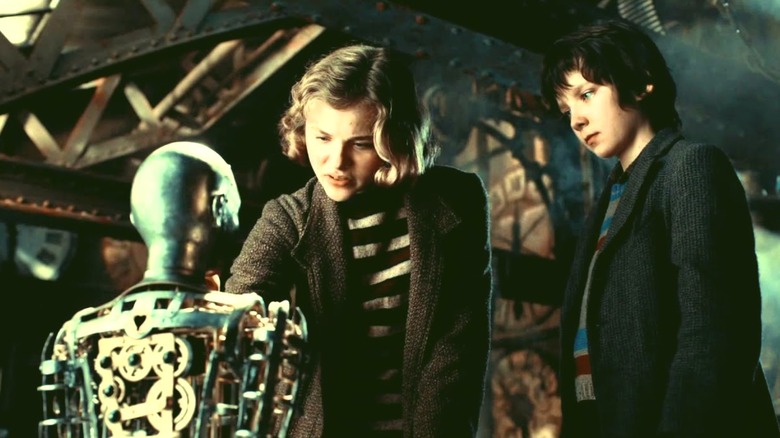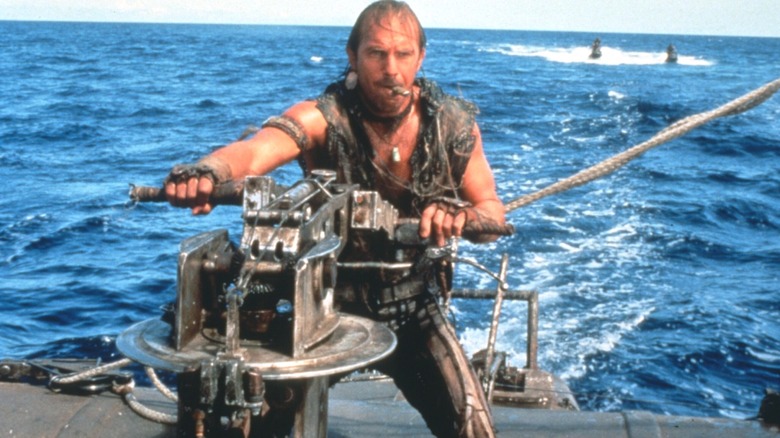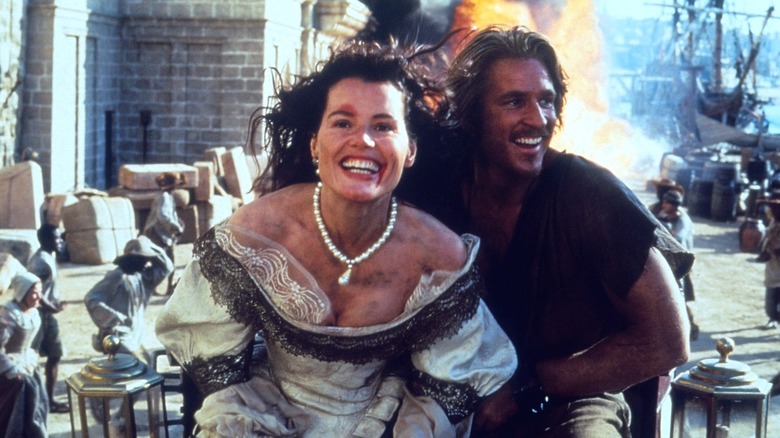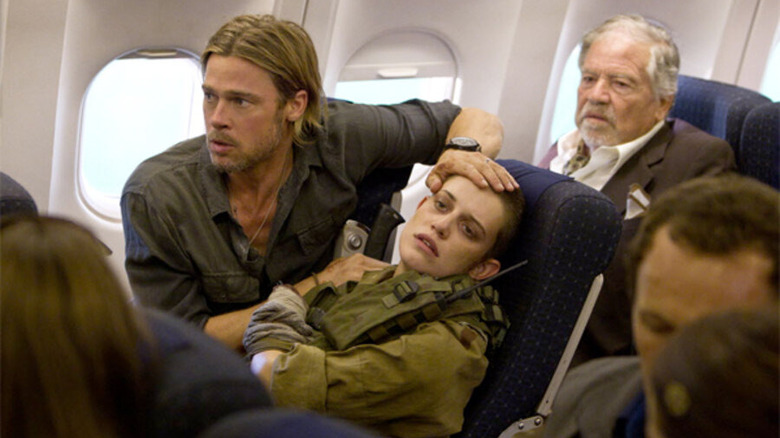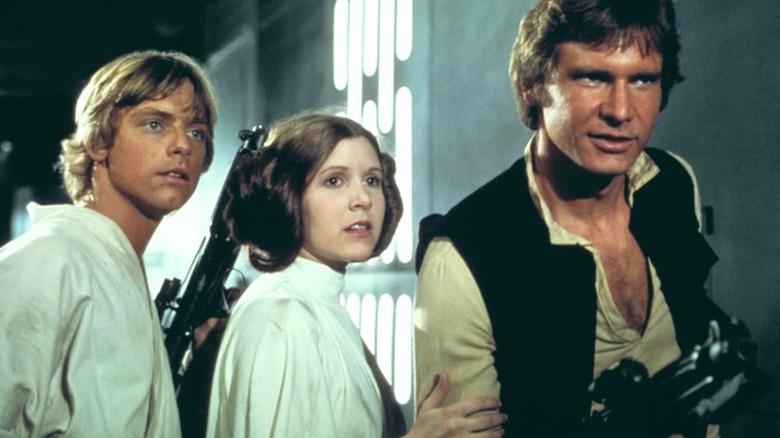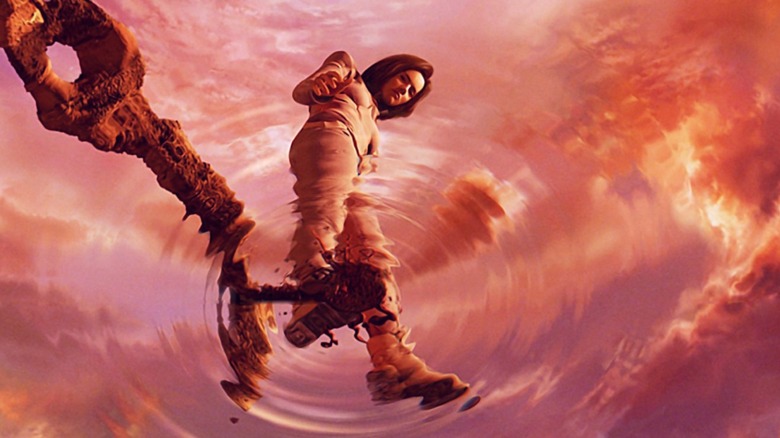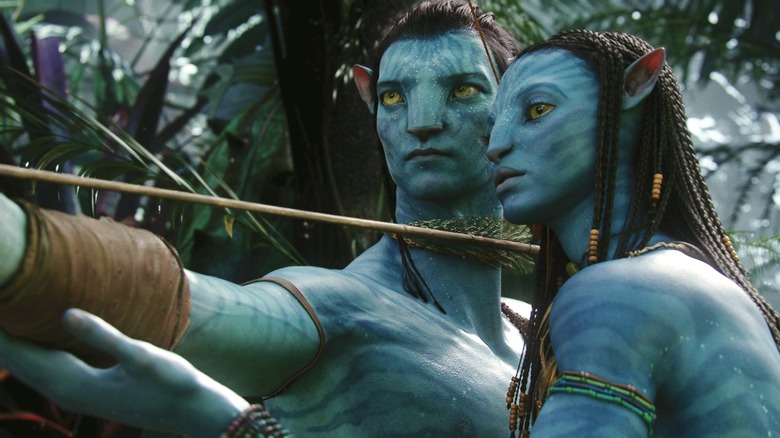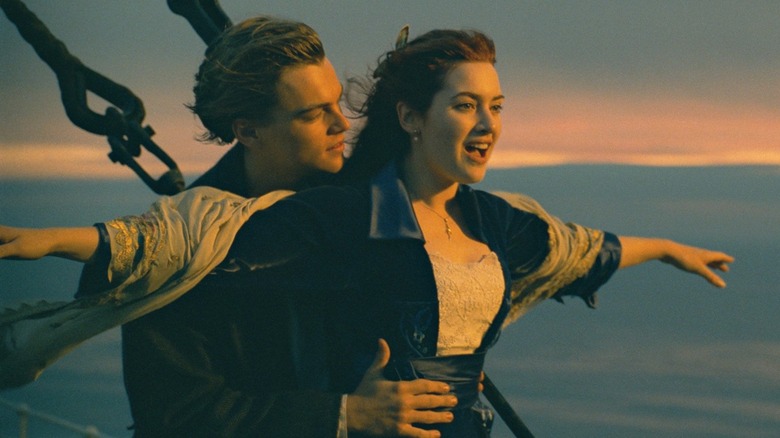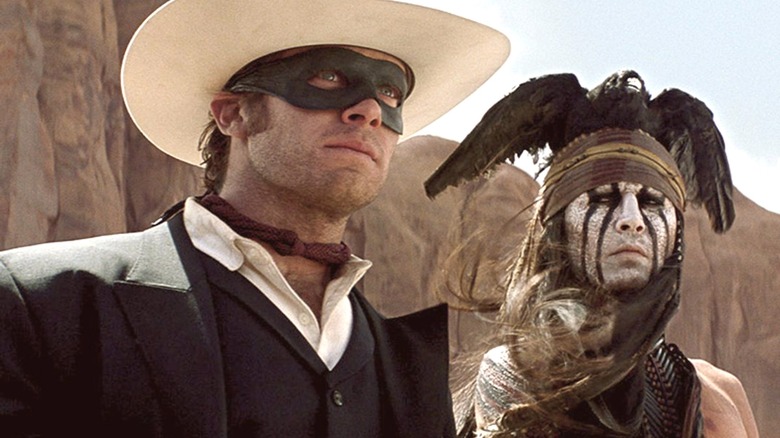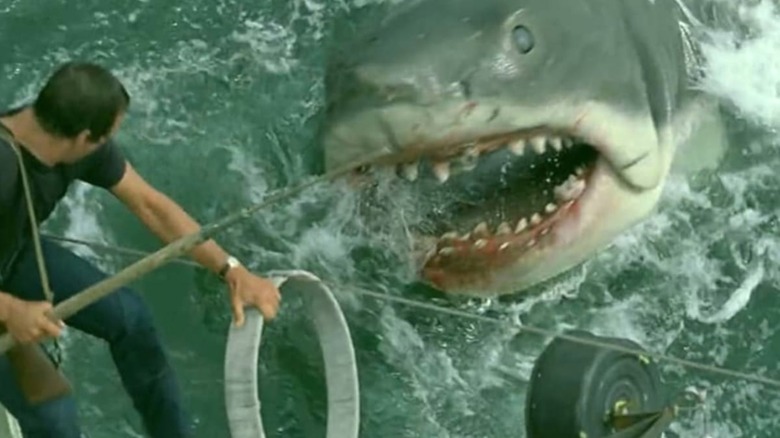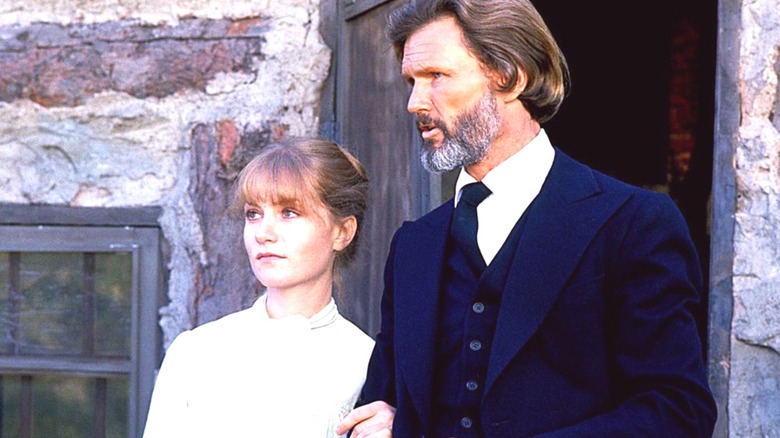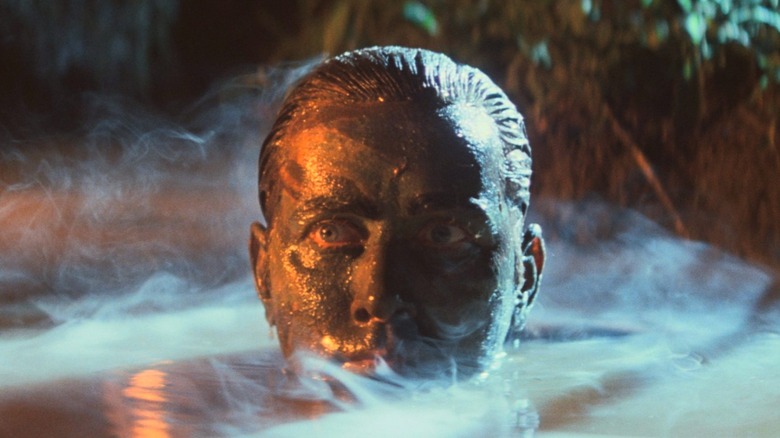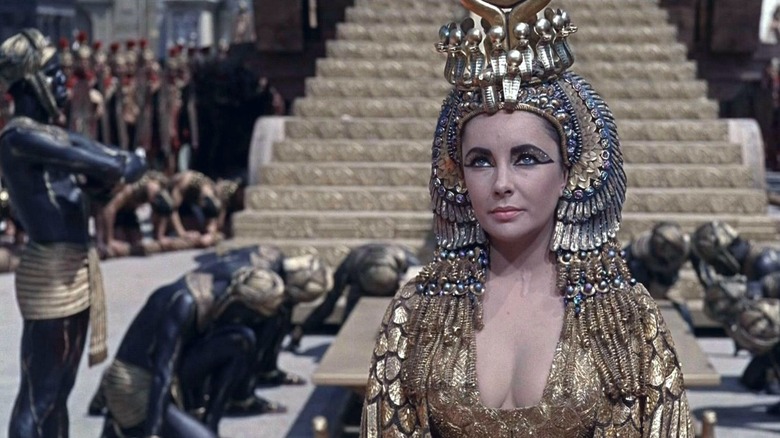14 Movies That Went Massively Over Their Budgets
When it comes to Hollywood movies, the added costs associated with multimedia marketing campaigns usually means that releases need to at least double their production budget to break even. The official production budget is never the only cost, so when that figure ends up ballooning during a shoot, it often spells trouble. What happens when a movie that's budgeted for something like $60 million ends up costing the studio $120 million? It's not uncommon for a movie to go over budget due to reshoots and other unforeseen issues. When this happens, it makes it harder for a film to see any sort of profit, as the break-even point moves further and further away.
Of course, movies that go over budget can still make a decent amount of money, and many often do. There are plenty of examples of films that went way over budget dominating at the box office, but there are just as many stories of studios that invested more than they would have liked in a project only to see it fail spectacularly. In some cases, these projects were disastrous enough that they actually killed off the studio for good. These 14 films all went massively over their initial budgets, and only half of them ended up making money.
King Kong's excess costs paid off at the box office
Peter Jackson's 2005 remake of the 1933 film that introduced the world to King Kong was always going to be a big production. Jackson isn't the type of director to skimp, so when he started working on "King Kong," he did so with a budget of $150 million. That might seem like a lot of money for a film that wasn't intended to launch a new franchise, but it wasn't enough.
Jackson's "King Kong" utilized many of the motion capture methods from his "The Lord of the Rings" films, which aren't inexpensive. Part of the film's cost included a $20 million deal for Jackson, who also secured 20% of the gross. That worked out well for him, seeing as "King Kong" brought in over $556 million in worldwide ticket sales.
As filming progressed, additional money was needed to finish the visual effects because Jackson extended the film by 20 minutes. When the budget ballooned to $207 million, setting a record for the costliest movie ever made up to that point, Jackson opened his wallet: The director covered much of the $32 million in additional costs himself, finishing the film 38% over budget.
Hugo's ballooned budget didn't attract viewers
Martin Scorsese is best known for his mafia and crime flicks, but in 2011, the director released an experimental 3D film called "Hugo," based on Brian Selznick's novel "The Invention of Hugo Cabret." "Hugo" features an all-star cast led by Asa Butterfield and Chloë Grace Moretz. It received 11 Academy Award nominations (the most of any film that year), and it came out to critical acclaim. Unfortunately, it bombed at the box office.
"Hugo" failed to attract viewers to movie theaters, but despite its disappointing cost and box office take, it's definitely worth a watch. The film was initially set to cost $100 million. When it was all said and done and the film was in the can, the studio had shelled out an additional $70 million, though tax credits reduced the total amount to $156 million. The film made $185 million worldwide, but after marketing costs, this was considered a big failure.
Part of the problem was the decision to film "Hugo" in 3D, which increased the cost. The shooting schedule was also extended to beyond 100 days, and the visual effects increased the costs beyond what the studio planned to spend. Ultimately, "Hugo" ended up 56% over its initial budget, and its poor ticket sales didn't help cover the excess expenses.
Waterworld's overspending is legendary
Kevin Costner made several high-profile, successful films in the 1990s. He earned a lot of clout, so when it came time to make "Waterworld," he was able to nab a producer credit and a hefty $100 million budget. That was an unheard of amount of money to make a film in 1995, but Universal greenlit for that amount. Before long, the costs had increased substantially.
Realizing the almost entirely waterlogged world of "Waterworld" wasn't cheap. The sets were expensive and there were extensive production delays, pushing the schedule beyond what was initially planned. Numerous problems drove costs to $175 million, making "Waterworld" the most expensive movie ever made up to that point. To cover the cost, it needed to rake in at least $350 million.
That didn't happen, and when "Waterworld" hit theaters, it bombed, making only $264 million. That's a lot of money, but movie math being what it is, "Waterworld" ultimately lost money, and Costner's career took a hit as well. It didn't help that filming began without a completed script, requiring writing and rewriting. In the end, "Waterworld" went 75% over its budget, solidifying itself as one of the biggest bombs in movie history.
Cutthroat Island sank big time at the box office
1995 was a year for big budget movie bombs, having seen the release of "Waterworld" and "Cutthroat Island." The latter went over its budget by a considerable amount. Years before the "Pirates of the Caribbean" franchise made pirate movies cool, director Renny Harlin undertook one of the most difficult productions of all time. He released a movie that lost millions and damaged the careers of everyone involved, especially Geena Davis.
"Cutthroat Island" was supposed to cost $60 million, but the final tally was significantly higher. Production was hit with numerous delays and other problems, including losing its leading man (Michael Douglas, who was replaced by Matthew Modine) shortly before filming began. One of the ships constructed for the film burned in a fire. Additionally, members of the crew fell ill, and the cost of filming on location added to the budget.
Ultimately, Carolco Pictures spent $98 million on "Cutthroat Island," going over budget by 63.33%. The expense was enough to kill the entire studio, which filed for bankruptcy protection. "Cutthroat Island" lasted for two weeks in theaters and made only $10 million. There was hope "Cutthroat Island" would solve the studio's financial problems, but it ended up being the nail in its coffin.
World War Z is the most expensive horror movie ever
Brad Pitt has several notable franchises under his belt, and had everything gone according to plan, "World War Z" would have been another. The film was greenlit with a budget of $125 million, which is a lot for a zombie movie, but Pitt brought star power to the project. That certainly helped "World War Z" at the box office — it pulled in an impressive $540 million globally.
A sequel was in the works at one stage, but it was ultimately canceled for budget issues. That ended the franchise, and it's not surprising the sequel's budget was a problem, seeing how "World War Z" went way over budget — in the end, it cost approximately $190 million. That made "World War Z" the most expensive horror movie ever made. Still, despite "World War Z" going 52% over budget, it was financially and critically successful.
The total figure could have been even higher had Adam Goodman, who was president of Paramount at the time, not put his foot down when the filmmakers asked for even more. "We did not give them extra money," Goodman said (per Vanity Fair). "When you are that deep in production and your budget has taken hits along the way, you put it back on the filmmakers and say, 'You've got to absorb those hits and figure out how to make the best with what you have here.'"
The first Star Wars film only had a $7 million budget
George Lucas had a difficult time bringing "Star Wars" to the silver screen in 1977. He received a "no" from several studios before managing to score a contract with 20th Century Fox. When he finally got a green light, Lucas was given a production budget of $7 million, which is around $36 million in 2024 dollars. That's not a lot for a space opera, and Lucas ultimately spent more.
"Star Wars" wasn't an easy shoot, with the production running into several delays. Shooting on location in Tunisia increased costs due to weather-related mechanical and electronic breakdowns. Several people were injured, and other issues made filming something of a nightmare. The delays were costly, and by the end of production, "Star Wars" cost Fox $11 million to produce.
This meant that "Star Wars" (which was later retitled "Star Wars: Episode IV – A New Hope") came in at 57.14% over its initial budget. Fortunately, Lucas didn't have to worry about the studio offering him more work because "Star Wars" was a cinematic game-changer. The film made $307 million on its initial release, and it spawned a multimedia franchise that continues to dominate entertainment to this day. $11 million was a small price to pay for that outcome, even in 1977.
Final Fantasy: The Spirits Within broke new ground
"Final Fantasy: The Spirits Within" is the first photorealistic computer-animated film ever produced, and, as you may imagine, it wasn't cheap. The film was released in 2001 when the technology to realistically render humans on film was still being fine-tuned. Square Enix (creator of the "Final Fantasy" games) set up Square Pictures to render the film, which took four years to complete. When the film began production, it did so with a budget of $70 million. Unfortunately, that budget didn't remain intact.
By the time everything was finished, Square Pictures dropped $137 on "The Spirits Within," making the film 95.71% over budget. Unfortunately, the film wasn't a hit, and it only managed to make $85 million at the global box office. How did this happen? Well, Square Pictures spent $46 million building a studio in Hawaii, throwing that cost into the production of "The Spirits Within." As filming progressed, costs increased, and the budget ballooned to nearly double the initial figure.
Avatar was already expensive when it blew past its budget
James Cameron is another director who embodies the notion of "go big or go home." His films often take years to make, and he invents new technology to further what is possible via visual effects. It took Cameron over a decade to make "Avatar," which blew up the box office, earning $2.9 billion globally. At the time of this writing, it remains the highest-grossing film of all time.
Cameron's project was ambitious, with the majority of shots needing CGI, much of it extensive. Initially, "Avatar" was set to cost $195 million, but it didn't take long for that figure to skyrocket. A Fox spokesperson told TheWrap that the final cost of "Avatar" stood at $237 million. Just looking at production costs, "Avatar" went 21.54% over budget, though there was an additional $150 million spent on promotion.
What the Fox spokesperson didn't mention was that "Avatar" actually enjoyed a hefty tax credit from New Zealand, so the actual cost of the movie was higher. Ultimately, the extra costs were worth it, seeing as "Avatar" broke numerous records on its way to box office domination.
Titanic cost double what producers expected
"Avatar" wasn't the first time James Cameron went well over budget on a film. "Titanic" is another huge picture that earned a lot of money, but it did so with a larger budget than initially planned. When Cameron began production, he had a $100 million budget, but that number quickly doubled to $200 million. Yes, "Titanic" went 100% over its initial budget, but seeing as it's one of the most successful movies ever made, it was a gamble worth taking.
One of the reasons the film was so expensive was that it recreated much of the original Titanic, inside and out. This wasn't cheap by any means, as the replica was 775 feet long. All the intricate detail visible in every scene is as close to the original as possible. In the end, every minute of "Titanic" cost around a million dollars, but the outcome was spectacular — it became the highest-grossing film ever, pulling in $1.8 billion during its original run.
The Lone Ranger spent money needlessly
"The Lone Ranger" is a movie that languished in development hell for years. That rarely results in anything but a box office bomb, and "The Lone Ranger" certainly qualifies. The film attempted to bring a once-popular franchise into the 21st century, but it took years to make and cost way too much. When it finally entered production, it did so with a $70 million budget. As filming commenced, the budget shot up to $250 million before Disney stepped in, forcing the costs down to a slightly more manageable $215 million.
It turned out that money was being spent irresponsibly. One example is that the filmmakers hired a yo-yo world champion for one small scene involving a pocket watch. Speaking during a roundtable event put on by The Hollywood Reporter, leading man Armie Hammer revealed that the yo-yo champion was able to teach actor Tom Wilkinson how to do the trick in a matter of seconds, but he had been hired for the whole shoot. In the end, "The Lone Ranger" came in at 207.14% over budget. It made $260 million, resulting in a huge loss for Disney.
Jaws ran into trouble with its mechanical sharks
1975's "Jaws" is remembered as the first summer blockbuster, the film that set Steven Spielberg on the path to becoming the most successful film director of his generation. "Jaws" was a massive hit, but it wasn't easy to make due to the complicated nature of the film's killer Great White. The three mechanical sharks made for the film ran into problems throughout the shoot. When Spielberg started working on the film, he secured a budget of $4 million from Universal, but he soon learned he'd have to dig a little deeper into the studio's coffers.
By the end, the film's budget had increased to $9 million, putting it 125% over budget. Production ran into one problem after another, requiring the shoot to continue for an additional 100 days. That increased the budget significantly, as did filming in the ocean — tests on Bruce were conducted in freshwater, and the mechanical shark quickly demonstrated its inability to function in saltwater. Ultimately, the troublesome shoot didn't matter, as "Jaws" made $260 million during its initial run.
Heaven's Gate cost so much it killed the studio
Few films are as notorious as "Heaven's Gate" in terms of over budgeted movies that utterly bombed at the box office. In fact, "Heaven's Gate" did so poorly that it killed the studio that made it, forcing United Artists to sell its assets to MGM and become a subsidiary of the larger company. The film began production with an initial budget of $7.5 million, but it didn't stay there for long.
"Heaven's Gate" was directed by Michael Cimino, who was coming off the hit film "The Deer Hunter." He was a director in demand, and he knew he could have things his own way. This didn't go down well with the cast and crew, who nicknamed him "Ayatollah Cimino" according to the BBC. Cimino demanded retakes and reshoots that weren't in the budget and the film languished, spending far too much time in production than should have been necessary.
All this increased the film's cost significantly, exploding its budget to $44 million. That put "Heaven's Gate" a whopping 486.67% over budget, so it had to do incredibly well to recover its costs. Of course, that didn't happen: When the film hit movie theaters, it only managed to rake in $3.4 million. That certified "Heaven's Gate" as a monumental box office bomb, though it has come to be recognized as a misunderstood masterpiece in the years since.
Apocalypse Now's set was destroyed by a typhoon
Francis Ford Coppola's "Apocalypse Now" is widely regarded as one of the greatest war movies ever made. It's also known for being one of the most challenging film productions of all time, as nearly everything that could have gone wrong during the shoot did. Two months into filming in the Philippines, Typhoon Olga destroyed most of the sets, resulting in a big delay in production. The film's budget was set at $12 million, but costs quickly skyrocketed.
However, while much of what happened was beyond anyone's control, some of the overspending was pure indulgence. According to reports, Coppola was having pasta flown in directly from Italy, and he's also said to have had an entire plane full of hot dogs flown in from the States for his birthday, just one of the many bizarre things that happened on the set of "Apocalypse Now." When filming was completed, Coppola had spent $31.5 million, blowing up his budget by 157.15%. Luckily, the film was a hit, earning nearly $105 million at the box office.
Cleopatra's additional costs blew up the budget by 780%
Of all the movies that have blown past their budgets, none come close to the exorbitant spending of 1963's "Cleopatra." The film is a true historical epic, clocking in at 251 minutes. Each scene is jam-packed with beautiful costumes and elaborate sets. "Cleopatra" originally had a budget of $5 million, with a million of that going to Elizabeth Taylor in the eponymous role, an unprecedented salary at the time.
Salary costs were only a small part of what made "Cleopatra" so expensive. Production delays messed with everyone's schedules, so both Marc Antony and Julius Caesar's roles (as well as others) had to be recast. Lots of useless footage was tossed as the producers desperately tried to get the film on track. When all was said and done, the movie ended up costing 20th Century Fox $44 million, a 780% increase. Unfortunately, it was a box office bomb, making only $57.7 million.
